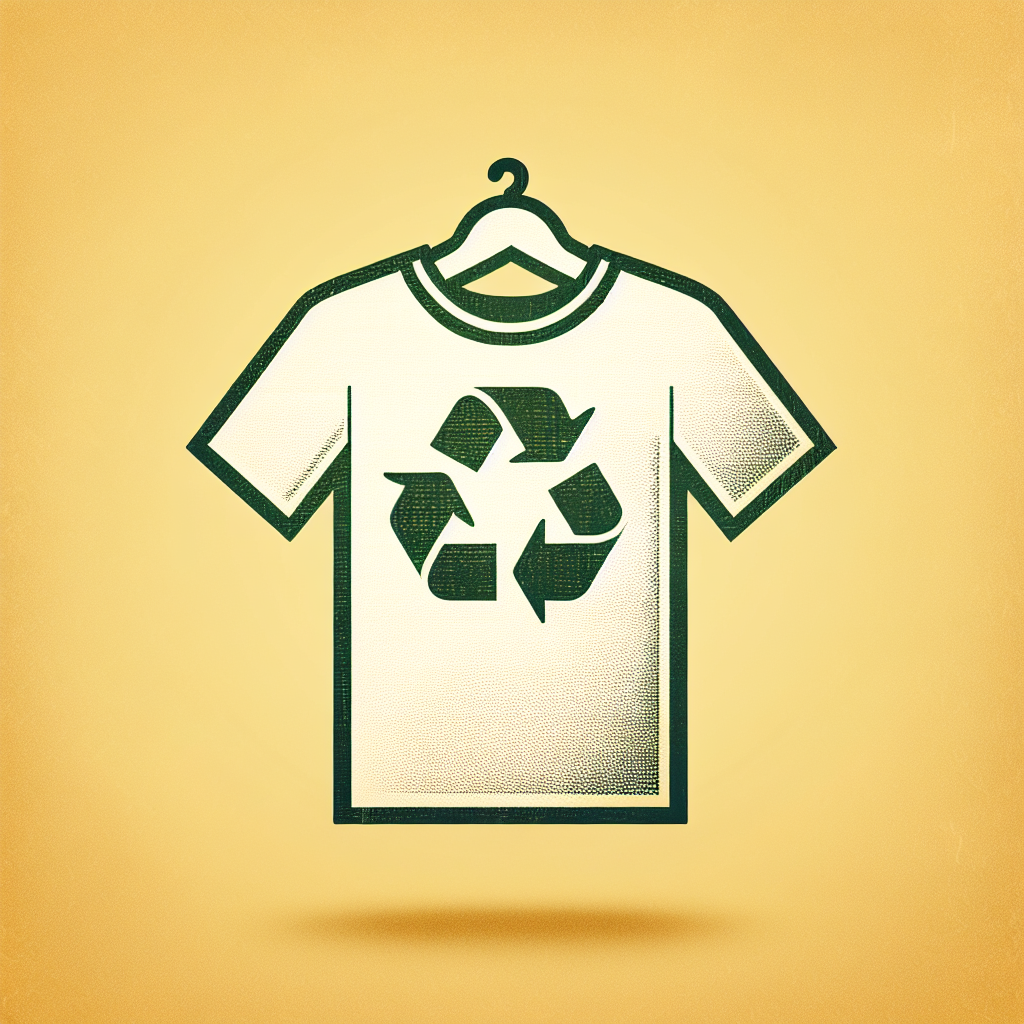Have you ever wondered about the growing popularity of eco-friendly fashion? With sustainability becoming a buzzword in the fashion industry, there has been a remarkable rise in the number of brands embracing eco-conscious practices. From using organic materials to implementing ethical manufacturing processes, these fashion brands are revolutionizing the way we think about clothing. In this article, we will explore the reasons behind the surge in eco-friendly fashion brands and how their innovative approaches are shaping the future of the industry. Get ready to discover the exciting world of sustainable fashion!
The environmental impact of the fashion industry
The fashion industry is notorious for its environmental impact, with various practices and processes contributing to pollution and resource depletion. One significant issue is water pollution resulting from textile dyeing. Chemical dyes used in the production of textiles often contain harmful substances that are released into waterways, leading to the contamination of rivers and oceans. This pollution not only poses a threat to aquatic ecosystems but also impacts human health.
Another concerning environmental consequence of the fashion industry is deforestation caused by the sourcing of materials. Many fashion brands rely on materials like cotton, leather, and rayon, all of which require significant amounts of land for cultivation or grazing. The clearing of forests for such purposes leads to habitat destruction and loss of biodiversity, contributing to ecological imbalances.
As fashion production processes have become more intensive, the industry’s carbon dioxide (CO2) emissions have also increased. These emissions result from various stages, including textile manufacturing, transportation, and garment production. The fashion industry contributes to climate change by releasing greenhouse gases into the atmosphere, exacerbating global warming and its detrimental effects.
Additionally, waste generation from the disposal of clothing is a major environmental concern. Fast fashion, characterized by cheap and disposable garments, has led to a culture of overconsumption, resulting in mountains of textile waste. Most of these discarded textiles end up in landfills, where they can take hundreds of years to decompose. The disposal of clothing further contributes to pollution and resource depletion.
Introduction of eco-friendly fashion brands
In response to the environmental challenges posed by the fashion industry, eco-friendly fashion brands have emerged as a sustainable alternative. These brands prioritize minimizing their environmental impact through various practices and principles. One key aspect of eco-friendly fashion is the use of organic and recycled materials, reducing the reliance on resource-intensive and polluting materials.
Eco-friendly fashion brands also emphasize sustainable and ethical practices. This includes promoting fair labor conditions, ensuring the welfare of workers along the supply chain, and avoiding exploitative practices. Ethical considerations extend to animal welfare, with many eco-friendly fashion brands opting for cruelty-free and vegan materials.
Transparency in the supply chain is another defining principle of eco-friendly fashion. Brands committed to sustainability often provide information about their sourcing practices, manufacturing processes, and certifications they hold. This transparency enables consumers to make informed choices and supports a more accountable and responsible fashion industry.

The demand for sustainable fashion
The demand for sustainable fashion has been steadily growing, driven by a heightened awareness of environmental issues among consumers. With increased access to information and media, people are becoming more conscious of the detrimental effects of the fashion industry on the planet. As a result, they are seeking alternative options that align with their values of sustainability and ethical consumption.
This shift towards conscious consumerism is not only driven by individual choices but also by the influence of celebrities and influencers. Famous personalities using their platforms to promote sustainable fashion have created a ripple effect, inspiring their followers to make more environmentally conscious fashion choices. Social media platforms have also played a significant role, allowing sustainability-focused influencers to reach a wider audience and amplify the message.
The rise of eco-conscious Millennial and Gen Z consumers has been particularly instrumental in driving the demand for sustainable fashion. These younger generations are more aware of environmental issues and are actively seeking brands that prioritize sustainability. They are willing to invest in eco-friendly products and are vocal about their expectations from the fashion industry.
Benefits of eco-friendly fashion brands
The adoption of eco-friendly fashion brands offers several benefits for the environment and society. By reducing the environmental footprint, these brands contribute to the conservation of resources and the protection of ecosystems. Their emphasis on sustainable practices results in less water and energy consumption, minimizing the strain on natural resources.
Furthermore, eco-friendly fashion brands play a crucial role in mitigating climate change. By reducing CO2 emissions throughout the production process, they contribute to the global effort to limit greenhouse gas emissions. These brands also prioritize the preservation of biodiversity by avoiding practices that contribute to deforestation and habitat destruction.
In addition to the environmental benefits, eco-friendly fashion brands also contribute to social and ethical progress. Their commitment to fair labor conditions and worker welfare promotes positive social impact and supports sustainable livelihoods. By prioritizing transparency, they empower consumers to make conscious and informed choices, fostering a more responsible fashion industry overall.

Challenges faced by eco-friendly fashion brands
Despite the positive impact they bring, eco-friendly fashion brands face several challenges that hinder their widespread adoption. One significant hurdle is the limited availability and variety of eco-friendly materials. While the options for organic and recycled materials are increasing, they still represent a fraction of what is available in conventional fashion. This limitation can constrain the creative possibilities for designers and make it challenging for eco-friendly brands to offer a diverse range of products.
Higher production costs are another challenge faced by eco-friendly fashion brands. Sustainable practices often require additional investments, such as organic certifications, ethical sourcing, or fair labor wages. These expenses can make it difficult for eco-friendly brands to compete with fast fashion brands that prioritize low-cost production. Balancing sustainability with affordability remains a persistent challenge in the fashion industry.
The dependency on a niche market is also a challenge for eco-friendly fashion brands. While the demand for sustainable fashion is growing, it is still a relatively small segment compared to the mainstream fashion market. This limited market reach can make it challenging for eco-friendly brands to scale their operations, reach wider audiences, and have a significant overall impact.
The issue of greenwashing also poses a challenge to the credibility of eco-friendly fashion brands. Greenwashing refers to the practice of misleading consumers about a brand’s environmental claims. Some brands may present themselves as sustainable or eco-friendly without truly implementing sustainable practices throughout their supply chain. This discrepancy between promises and reality can cause skepticism among consumers and hinder the growth of genuinely sustainable fashion.
Innovations in sustainable fashion
Despite the challenges, the fashion industry is witnessing various innovations in sustainable practices and materials. Technological advancements and research have opened the door to the development of alternative materials. For example, innovations in fabric technology have led to the creation of sustainable alternatives to conventional materials like leather and cotton. These alternatives, such as pineapple leather and hemp textiles, offer eco-friendly alternatives without compromising on quality or durability.
The adoption of circular economy principles is also gaining traction in sustainable fashion. This approach focuses on minimizing waste and maximizing resource efficiency throughout the fashion lifecycle. Brands are exploring techniques like recycling, upcycling, and the design of garments with longevity in mind. By keeping materials in use for longer periods, the fashion industry can reduce its environmental impact and move towards a more sustainable model.
Technological advancements in textile recycling have provided novel solutions for the industry. Processes such as chemical recycling can convert discarded textiles into new fibers, reducing the need for virgin materials. Additionally, innovations in 3D printing and other manufacturing techniques are offering possibilities for more precise and efficient production, reducing waste and environmental impact.
Sustainability is also being integrated into fashion shows and events. Designers and organizers are incorporating sustainable practices, such as using renewable energy, promoting waste reduction, and ensuring responsible sourcing. Sustainability-focused fashion weeks and events are providing platforms for eco-friendly brands to showcase their designs and engage with a wider audience.
Collaborations and initiatives for sustainability
Recognizing the urgency of addressing the fashion industry’s impact on the environment, various collaborations and initiatives have emerged to promote sustainability. Partnerships between fashion brands and environmental organizations are fostering collective efforts towards sustainable production. By working together, brands can share knowledge, resources, and best practices, accelerating the adoption of sustainable approaches.
Within the fashion industry, there are numerous initiatives aimed at encouraging sustainable production practices. Organizations like the Sustainable Apparel Coalition enable fashion brands to assess and improve their environmental and social impacts. They provide tools and standards for measuring sustainability, allowing brands to track their progress and identify areas for improvement.
Government regulations and policies also play a crucial role in promoting sustainability in the fashion industry. Some countries have implemented measures to regulate or incentivize sustainable practices, such as mandatory environmental reporting or tax incentives for eco-friendly brands. These policies create a regulatory framework and influence industry-wide change towards sustainability.
Sustainable fashion campaigns and events are another avenue for driving change. Activism-led initiatives, such as Fashion Revolution Week, raise awareness about the fashion industry’s social and environmental impact and encourage consumers to ask #WhoMadeMyClothes. These campaigns shine a spotlight on the need for more transparency and accountability in the fashion industry.
Consumer behavior and the future of sustainable fashion
Consumer behavior plays a pivotal role in shaping the future of sustainable fashion. As more consumers prioritize sustainability and seek out eco-friendly brands, the market for sustainable fashion continues to grow. By supporting these brands, consumers can directly contribute to reducing the environmental impact of the fashion industry and drive the demand for more sustainable practices.
Education and awareness have a significant role to play in shifting consumer preferences towards eco-friendly brands. Informing consumers about the environmental and social impacts of the fashion industry can empower them to make more sustainable choices. Educating consumers about the benefits and limitations of sustainable fashion can help combat greenwashing and ensure informed decision-making.
The integration of sustainability in mainstream fashion is a crucial aspect of creating a more sustainable future. As sustainability becomes a key consideration across all fashion segments, from high-end brands to fast fashion, the entire industry can progress towards more environmentally friendly practices. This integration will require collaboration, innovation, and a collective commitment to change.
There is immense potential for a more circular and ethical fashion industry. By embracing circular economy principles, fashion brands can design garments with longer lifespans, encourage repair and reuse, and establish systems for responsible product disposal. Shifting towards a circular fashion economy will require collaboration between brands, consumers, and policymakers to create the necessary infrastructure and market demand.
The rise of eco-friendly luxury fashion
Luxury fashion brands, traditionally associated with opulence and exclusivity, are also increasingly embracing sustainability. These brands recognize the growing demand for eco-friendly options and the need to align with changing consumer values. By incorporating sustainability into their practices, luxury brands can meet the expectations of their discerning clientele and differentiate themselves in the market.
Environmental and ethical certifications are one way luxury fashion brands showcase their commitment to sustainability. Independent certifications, such as the Global Organic Textile Standard (GOTS) or the Responsible Wool Standard (RWS), provide assurance to consumers that luxury products meet stringent environmental and social standards. These certifications help build trust and credibility in a sector often associated with luxury and quality.
Promoting sustainable craftsmanship and heritage is another avenue for luxury fashion brands to prioritize sustainability. By preserving traditional techniques and supporting artisans, luxury brands can celebrate craftsmanship while also promoting sustainable practices. This approach not only adds value to products but also contributes to the preservation of cultural heritage and the empowerment of local communities.
The rise of sustainable luxury also has implications for consumer behavior and perception. Sustainable luxury is increasingly seen as a status symbol, representing wealth and sophistication along with conscious consumption. By choosing eco-friendly luxury brands, consumers can showcase their values and contribute to a more sustainable fashion industry.
Conclusion
The rise of eco-friendly fashion brands marks a significant shift towards a more sustainable and environmentally conscious fashion industry. These brands, by prioritizing sustainable and ethical practices, are reducing their environmental footprint, mitigating climate change, and promoting social and ethical progress. However, they face challenges such as limited availability of eco-friendly materials, higher production costs, and the need to reach a wider market. Innovations, collaborations, and consumer behavior will play critical roles in the future of sustainable fashion. By collectively embracing sustainability, the fashion industry can forge a more environmentally friendly path and shape a more sustainable future for generations to come.

